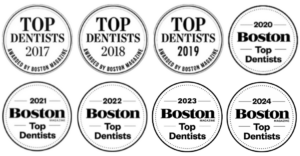Important Things to Consider before Getting Invisalign
Invisalign is a great alternative to traditional braces for people who are looking for a straighter smile without all of the metal. The aligner trays are custom-made and barely noticeable, making this a great option for people who want to avoid the metal mouth look.
That said, there may be a few things to consider first before getting one for yourself. Below are just a few examples.
Know That It Is Custom-Made
Invisalign is different from traditional braces in that they are custom-made for your mouth. This means that your orthodontic needs will be specifically met rather than using a one-size-fits-all approach. It uses a series of clear aligners to gradually straighten your teeth. You’ll switch to a new set of aligners every two weeks until your treatment is complete and you achieve the smile you’ve always wanted.
Ensure That You Have Consistent Communication with Your Orthodontist
The Invisalign process uses a series of clear, removable aligners to gradually and gently shift your teeth into place. You’ll need to wear each set of aligners for about two weeks before moving on to the next set. When you’re getting Invisalign treatment, you’ll need to go back to see your orthodontist every 8-10 weeks. This is to make sure that your treatment is on track and that you’re on your way to getting a straighter smile.
Practice Proper Discipline during the Treatment Period
Invisalign is a great choice for people who want to improve their smile without having to wear traditional braces. Since the aligners are removable, you may take them out to eat, drink, and brush your teeth. You don’t have to change your diet as well.
You should wear your Invisalign trays for at least 22 hours a day to get the best results. This means you must be careful about when you take them out and how long. If you remove your Invisalign trays for too long, it can slow down your treatment. Invisalign is usually recommended for older teenagers and adults who can be responsible for the freedom that Invisalign provides.
Brush Your Teeth and Floss Regularly
Even though you’re not wearing braces, you still need to brush and floss regularly to avoid cavities and tooth decay. Be sure to brush at least twice a day and every time you eat. Food might get stuck in between your teeth and then will be left in your aligners if not removed.
Keep Your Aligners Clean
It is essential to keep your Invisalign clean as you would your teeth. This means regularly cleaning them to prevent bacteria and germs from growing. Invisalign offers a special cleaner to soak the aligners; however, toothpaste can damage the trays by brushing them with toothpaste. A gentler cleansing method would be to use soap and water. Remember to rinse the aligners well after.
Remember That Invisalign Can Include Adjustments as Well
Since Invisalign is a clear aligner that is used to straighten teeth, attachments are used in most cases to help move them accordingly. The more difficult the case, the more attachments there will be. This helps create anchor points that apply pressure to move certain teeth.
Take Note of the Possible Discomfort
Invisalign could cause some discomfort in the beginning as your teeth are being moved into position. You might feel some pain or sensitivity, but this is just normal. It is more comfortable to wear in the long run and doesn’t use any brackets or wires that could irritate your mouth.
Conclusion
If you are looking for a new way to maintain your smile, investing in an Invisalign implant may be a good option for you. With the help of a professional aligner, you can achieve a more consistent and beautiful smile in a short amount of time.
If you are looking for a dental clinic that specializes in Invisalign in Lexington, look no further than our services here at Lexington Smile Studio. Our dental services include cosmetic dentistry, prosthodontics, implant dentistry, periodontics, and laser dentistry. Call us today to book your first Invisalign session with us.



